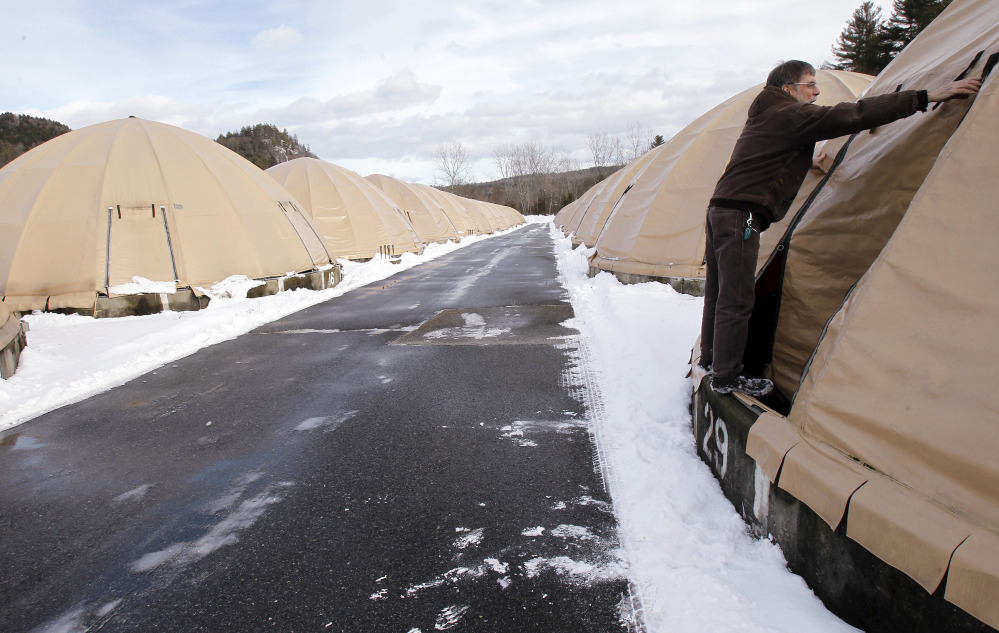MONTPELIER, Vt. — An employee of the U.S. Fish and Wildlife Service was punished by his supervisor for refusing to inflate damage estimates at a Vermont fish hatchery as it was being assessed for repairs after flooding from Tropical Storm Irene in 2011, a federal investigation has found.
The supervisor at the White River National Fish Hatchery, in Bethel, prevented the employee from being assigned to work details he wanted and kept him from being selected for positions he applied for after he refused to go along with his supervisor’s orders, a report by the Office of Inspector General of the Department of the Interior found.
The investigation, completed July 28 and released to The Associated Press after a Freedom of Information Act request, found the supervisor attempted to increase the hatchery’s storm damage by adding about $6 million in capital improvements to the initial $5 million repair estimates for damage caused by the storm. It also found the employee tried to stop the supervisor, expressing his concern about those claims to numerous people.
“We also found evidence that the employee experienced negative job-related actions after his involvement in the estimate and that his supervisor had influence over some of these actions,” a summary of the report said.
The Fish and Wildlife Service manager denied the employee’s four requests for details and rejected requests for four positions to which he applied.
“This sequence of events creates the appearance of reprisal,” the report said.
The report released to the AP removed the names of the people involved.
Terri Edwards, spokeswoman for the Fish and Wildlife Service’s Northeast Region, said they are still reviewing the case and no personnel decisions would be made until that review is complete.
“However, I can say that we do not tolerate reprisal, and we take allegations of reprisal very seriously,” Edwards said.
She said that after any storm or similar event, there are internal deliberations to estimate damage costs.
“In this case, the final estimates were an accurate reflection of the damages,” Edwards said.
Before Tropical Storm Irene, the hatchery was used to produce hundreds of thousands of different species of trout and salmon every year for stocking across the Northeast.
The 2011 flooding heavily damaged part of the hatchery, with floodwaters inundating many of the outdoor tanks. The hatchery was then closed.
With final damage estimates pegged at about $5.5 million, Edwards said the repairs were made for $2.3 million, finding savings in using their own equipment and labor to complete much of the work.
The report did not say what prompted the investigation into the allegations of reprisal, which began in December.
It further said that among the items improperly listed for repair was $5 million to replace an “infiltration gallery,” a leach field beneath a riverbed. But that system was not in operation prior to the storm.
The service said it was ready to resume operations in 2013, but that was delayed after the service ended its Atlantic salmon restoration program in the Connecticut River, while officials searched for a new mission for the hatchery.
More recently, officials decided to use the hatchery develop brood stock for landlocked Atlantic salmon across the Northeast. The first fish are due to arrive this fall.
Send questions/comments to the editors.



Success. Please wait for the page to reload. If the page does not reload within 5 seconds, please refresh the page.
Enter your email and password to access comments.
Hi, to comment on stories you must . This profile is in addition to your subscription and website login.
Already have a commenting profile? .
Invalid username/password.
Please check your email to confirm and complete your registration.
Only subscribers are eligible to post comments. Please subscribe or login first for digital access. Here’s why.
Use the form below to reset your password. When you've submitted your account email, we will send an email with a reset code.